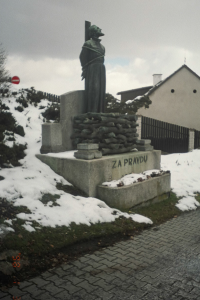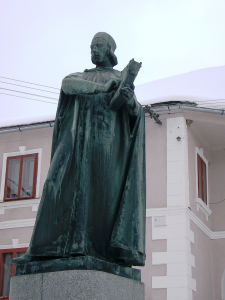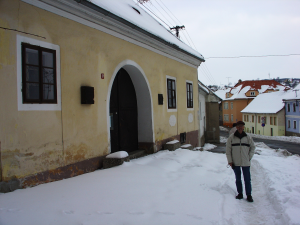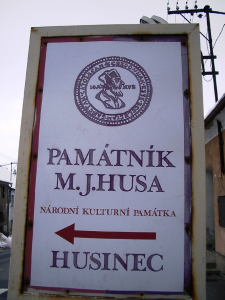The Life and Times of Jan Hus
.
.
[This article first appeared in the Volume 42/6 July 2015 issue of Faith in Focus, magazine of the Reformed Churches of New Zealand, with the kind permission of editor Walter Walraven.]
.
by John Goris
The Reformation of the Church stands out in our minds as having started on 31st October, 1517.
On that day Martin Luther nailed his 95 theses on the chapel door at Wittenberg in Germany. That will be 500 years ago in two years’ time.
However, the roots of the Reformation were already alive and well several centuries before that time. Things did not go well for the Church, and many people were conscious of that.
The papal leadership in Rome was experiencing corruption in many ways, even to the point of having two rival popes at the same time, viz. one at Rome, and one at Avignon (France).
Besides, Christianity in the Balkan lands and in the Middle East was threatened by the spreading empire of the Ottoman Turks. In China, where the Mongol empire was eventually broken up, centuries of Christian influence were undone, and in the Middle East the remnant of Mongolian leaders became Muslims.
The internal corruption in the Church stirred up discontent in Western Europe. Various groups arose who sought reformation and renewal. In Italy there were the Waldensians under Peter Waldo, a group persecuted but yet persevering even till today. In France the Cathari and other “purist” sects e.g. Albigenses, suffered severe persecution and were virtually wiped out: over a million followers! In the Netherlands the group of “The Brethren of the Common Life” arose and persevered. Thomas ’a Kempis became the well-known leader there.
There was a growing desire to return to the Scriptures among leading figures such as John Wycliffe, who began to translate the Bible in the language of the people, and sent out groups of preachers known as the “Lollards”. Wycliffe taught at Oxford, and it was through that connection that John Hus became acquainted with “the Morning star of the Reformation” (i.e. Wycliffe).
John Hus himself was a leading figure at the Prague University. Hus was a Bohemian, and strongly influenced many people in the region.
The leadership of the Roman Church became uneasy about these various attempts of reform, even though they saw some of their own failures, and set up Church councils. These councils tried to deal with “unruly” popes, and so-called “heretical” groups in the church. Popes John XXIII and Gregory VII were deposed in 1415, and Pope Benedict XIII met the same fate in 1417. It was this same Pope who condemned the teachings of John Hus at the Council of Constance (1414-1418), before he himself was deposed. Hus was ordered to be burned at the stake, despite the fact that Emperor Sigismund had promised to protect him.
Hus had sought to redirect the church in Bohemia back to the Scriptures, and had stressed that the “cup” of the Lord’s Supper was for the ordinary church member as well as the “bread”. However, the church had taken the “cup” away from the laity. The symbol of the “cup” (chalice) can still be seen on many public buildings in Bohemia, even after 600 years. I personally witnessed this.
It is actually amazing that in a secular Central European country such as the Czech republic there is still a public recognition and holiday to commemorate the death of Jan Hus (as he is known in Bohemia).
The many memorials of Jan Hus, scattered all over Bohemia, bear witness to a man of God who upheld the Bible. When visiting his birthplace and the home where he was born in Husinec in 2005, his statue (with a Bible in his hand) testified to that. Even today Hus is still regarded as the primary historical figure in the Czech Republic. Bohemia is the Western part of the country and Moravia the Eastern part. This part is known for the activities and witness of the Moravian Brethren. It is also known as the birthplace of another famous Czech person, Jan Amos Komensky (or Jan Amos Comenius, 1592-1670). He was a theologian and a reformer in the area of education. Komensky studied in Heidelberg, and died in Amsterdam.

The statue of Hus on
the stake, has the word Pravda (=truth) on it, which was near the home of the Reformed pastor of Prague.
This year on July 6th we celebrate the 600th year since the death of Jan Hus on the stake at Constance. It is a worthy occasion to give thanks for the life and labours of a man born a poor peasant, who became Rector of the Prague University, and preacher at Bethlehem Chapel. But above all, Hus stood up for the Truth at the expense of his life. Praise God for this forerunner of the Reformation!
Books consulted:
A.M. Renwick, The Story of the Church;
Owen Chadwick, The Reformation;
Kenneth Scott Latourette, The Thousand years of Uncertainty;
- Walker, A History of the Christian Church.
(left) John Goris outside the home of Jan Hus. (above) The Czech people are proud of their national hero and advertise that fact.
Comments are closed for this Article !




